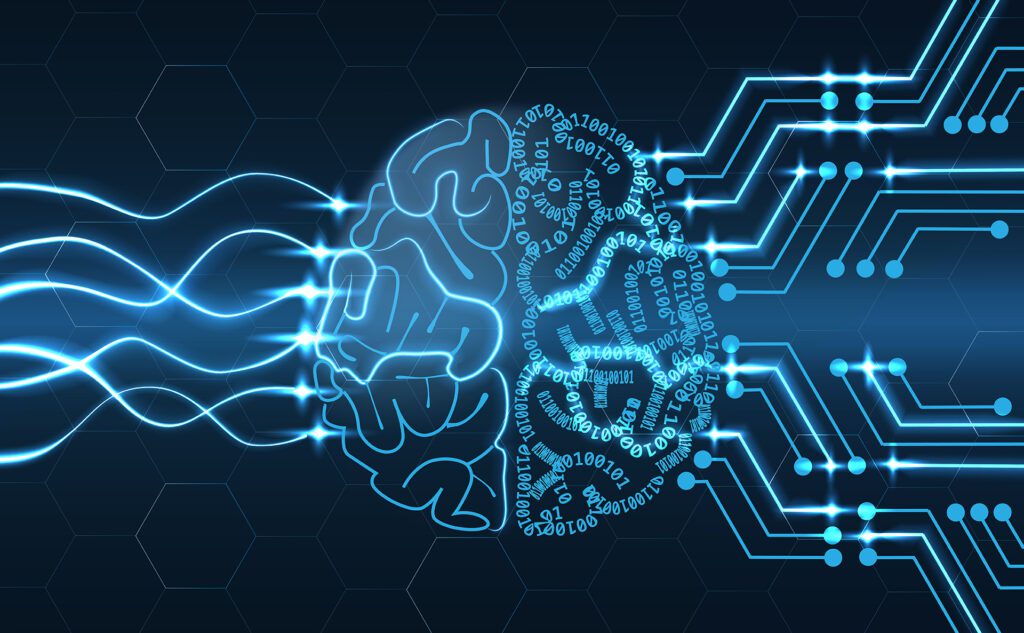Overcoming the Struggles of Modern Security: Harnessing the Power of AI for Enhanced Security Operations
Security teams today continue to face an uphill battle. The threat landscape grows more complex by the day, with sophisticated cyber threats that are difficult to detect using traditional security tools. At the same time, there is a shortage of skilled cybersecurity professionals, making it challenging for organizations to staff security operations centers (SOCs) adequately.
Gartner’s recently released Emerging Tech Impact Radar: Security examined technologies that could assist organizations in detecting and responding to attacks, as well as improving efficiencies through AI-based security hyper-automation.
One of the key areas the report highlights is AI Enhanced Security Operations. The research observes that most AI development in security products so far has focused on detecting threats, but there is increasing potential to use AI to improve security operations and incident response.
“AI will continue to be leveraged across a range of security services and products to expedite processes and to enable humans to focus on where the greatest threats reside while automation performs routine tasks.”Gartner
AI Enhanced Security Operations
Gartner defines AI-enhanced security operations as features/capabilities that help security analysts process and respond to incidents more effectively. This includes:
- Alert prioritization – Using AI to reduce false positives and highlight the most critical alerts.
- Augmented threat detection – AI can correlate events across tools to identify threats missed by individual tools.
- Automated playbooks – AI can help create and run automated response playbooks for common incidents.
- Virtual assistants – AI assistants can guide analysts on using security products and provide recommendations.

Security Team Challenges
According to the Gartner research, most security teams struggle with a few key areas:
Alert Fatigue – Security tools generate a flood of alerts, many of which are false positives. This makes it extremely difficult for analysts to identify and prioritize the alerts that really matter. Alert fatigue leads to alerts being ignored or missed entirely.
Limited Visibility – Security teams often use a patchwork of different tools that don’t integrate well. This results in blind spots and makes it hard to get a unified view of the organization’s security posture. Lack of visibility impedes threat detection and incident response.
Manual Processes – Many security operations processes are manual, repetitive, and time-consuming. Analysts spend too much time on mundane tasks like correlating data and documenting incidents. This takes focus away from proactive threat hunting.
Communication Challenges – During and after security incidents, communication with business leaders is often opaque. Security teams struggle to explain threats and response actions in plain language, which causes confusion and erodes confidence.
These challenges waste analyst time, allow threats to slip by undetected, and ultimately put the organization at greater risk. Security teams need help overcoming these challenges.
The Promise of AI-Enhanced Security
Artificial intelligence (AI) has the potential to be a game-changer for security operations. According to Gartner, AI-enhanced security solutions focus on improving threat detection, investigation, and response. The key benefits of AI are:
- Reduced false positives – AI models can be trained to distinguish between real threats and false alarms, prioritizing the alerts that matter. This alleviates alert fatigue.
- Unified visibility – AI can correlate data across the entire IT environment, including endpoints, networks, cloud, etc. This enables security teams to “connect the dots” better across siloed tools.
- Automated processes – Where rules can be defined, AI can help automate repetitive manual tasks like triage, initial investigations, and documenting incidents. This saves analysts time.
- Explainable threat intelligence – AI techniques like natural language generation can summarize threats and explain response actions in plain language. This improves communication with business leaders.
- Accelerated response – By reducing manual busywork, AI allows analysts to focus on critical thinking and complex investigations. Incidents can be detected and contained faster to speed up the incident response process.
According to Gartner, AI-enhanced security operations solutions are still maturing but have high potential. They estimate mainstream adoption in 1-3 years.

Key Capabilities of AI-Enhanced Security Platforms
AI-enhanced security platforms aim to augment security efforts and human analysts with data science techniques like deep learning, neural networks, and natural language processing. Here are some key capabilities:
- Behavioral analytics – User and entity behavior analytics (UEBA) detect anomalies and risky insider threats based on patterns.
- Intelligent triage – AI models automatically prioritize alerts, reducing false positives and highlighting the incidents that need attention.
- Root cause analysis – AI helps piece together full attack sequences by correlating alerts and events across tools and stages of the kill chain.
- Guided investigations – The platform provides step-by-step investigation workflows customized to the incident at hand and powered by AI.
- Automated playbooks – Low-level response actions are automated based on rule-based logic and supervised models. Analysts handle critical thinking.
- Explainable reporting – AI techniques summarize incidents with natural language processing and enable reporting in business terms rather than just technical jargon.
- Adaptive learning – As analysts provide feedback on investigations and findings, the system continuously improves detection and response.
The combination of these capabilities allows security teams to cut through the noise, focus on what matters, automate repetitive tasks, and collaborate more effectively with the business. AI becomes an invisible assistant augmenting human analysts’ security efforts.
Where to Begin Building an AI-Empowered Security Operations Center
To begin embracing AI and building out an advanced AI-enhanced Security Operations Center (SOC), security teams can follow these steps:
- Assess Current Capabilities: Evaluate the existing security infrastructure, tools, and processes to identify areas where AI can add value. Understand the specific security challenges and pain points that AI can help address.
- Define Objectives: Clearly define the objectives and goals for integrating AI into the SOC. Determine the specific use cases and outcomes that AI should enable, such as real-time threat detection, automated incident response, or anomaly detection.
- Identify Relevant AI Technologies: Research and identify AI technologies that align with the defined objectives. This may include machine learning, natural language processing, behavioral analytics, or predictive modeling. Consider both commercial solutions and open-source frameworks.
- Pilot Projects: Start with small-scale pilot projects to test and validate the effectiveness of AI technologies in addressing specific security use cases. This allows for iterative learning, fine-tuning of models, and gathering feedback from security analysts.
- Collaborate with AI Experts: Engage with AI experts, data scientists, or external vendors who specialize in AI for security. Collaborate to develop and deploy AI models, leveraging their expertise to ensure optimal performance and accuracy.
- Training and Skill Development: Invest in training and upskilling the security team to understand AI concepts, algorithms, and tools. This enables them to effectively work with AI technologies, interpret AI-generated insights, and make informed decisions.
- Continuous Improvement: Continuously monitor and evaluate the performance of AI models and algorithms. Regularly update and refine the models based on new threats, evolving attack patterns, and changing business requirements.
- Integration and Automation: Integrate AI capabilities into existing security tools and workflows to enhance automation and efficiency. This may involve integrating AI-driven threat intelligence platforms, automated incident response systems, or AI-powered security analytics tools.
- Stay Informed: Keep up with the latest advancements in AI and security. Attend conferences, participate in industry forums, and engage with the security community to stay informed about emerging AI technologies and best practices.
By following these steps, security teams can gradually embrace AI and build an advanced AI-enhanced SOC that leverages the power of AI to enhance threat detection, response, and overall security posture.
MixMode: AI Enhanced Threat Detection and Response
MixMode can help security teams achieve AI-enhanced security operations by providing an advanced AI-powered threat detection and response platform that helps security teams optimize their SOC and better detect threats missed by legacy solutions.
- Real-Time Threat Detection: MixMode’s Artificial Intelligence continuously analyzes network traffic, logs, and other security data in real-time to detect and identify potential threats. By leveraging self-supervised learning, MixMode’s AI can uncover anomalies and patterns that may indicate malicious activity, even in complex and evolving attack scenarios.
- Guided Response: MixMode’s AI capabilities enable faster response times by providing integrated threat intelligence and recommendations to security teams. The MixMode Platform can automatically prioritize alerts and escalate potential threats based on severity, reducing response time and allowing security analysts to focus on critical threats.
- Enhanced Visibility and Context: MixMode’s AI-powered analytics provide deep visibility into network traffic and security events, allowing security teams to gain a comprehensive understanding of their security landscape. The MixMode Platform correlates and contextualizes data from multiple sources, providing valuable insights and helping analysts make informed decisions.
- Adaptive Learning and Threat Intelligence: MixMode’s AI models continuously learn from new data and adapts to evolving threats. The platform leverages self-supervised learning techniques to improve accuracy and reduce false positives. Additionally, MixMode integrates with external threat intelligence feeds, enriching its analysis with up-to-date information.
- Simplified Investigations: MixMode’s intuitive interface and AI-driven analytics simplify the investigation process. Security teams can quickly search and analyze vast amounts of data, identify root causes, and understand the full scope of an incident. This accelerates incident response and reduces the time spent on manual investigation tasks.
- Scalability and Flexibility: MixMode’s cloud-native architecture allows for seamless scalability, enabling security teams to handle increasing data volumes without compromising performance. The platform can be easily integrated into existing security infrastructure, complementing and enhancing the capabilities of other security tools.
- Continuous Improvement: MixMode’s AI models are continuously updated and improved based on new threat intelligence and ingested data. This ensures that the platform stays ahead of emerging sophisticated threats and provides the most accurate and relevant insights.
By leveraging MixMode’s AI-enhanced platform, security teams can enhance their threat detection capabilities, automate incident response, gain valuable insights, and improve overall security operations. This empowers security analysts to focus on critical tasks, respond to threats more effectively, and stay one step ahead of threat actors.
AI-enhanced security operations platforms represent the future of security operations. By leveraging AI to reduce false positives, automate processes, and enable natural collaboration, these platforms allow security teams to overcome many of the challenges they face today.
Download the research to learn more about why Gartner says security leaders should evaluate AI-enhanced platforms to improve their threat detection, investigation, and response capabilities, and then contact us to help enhance your security operations.


.png)